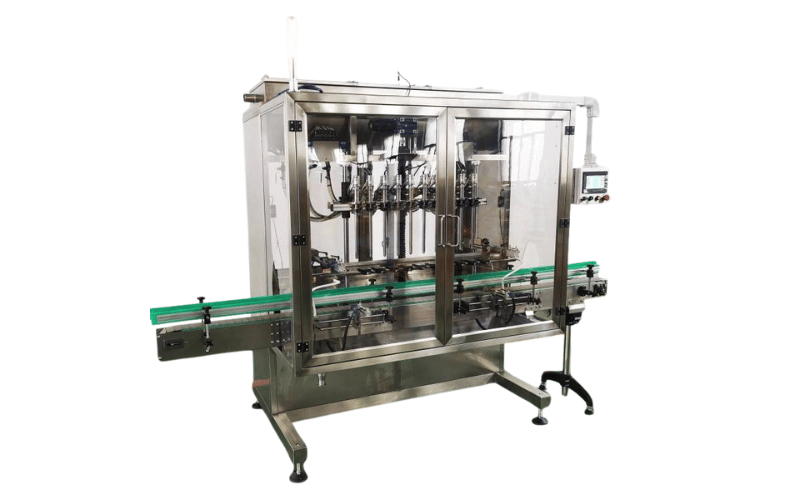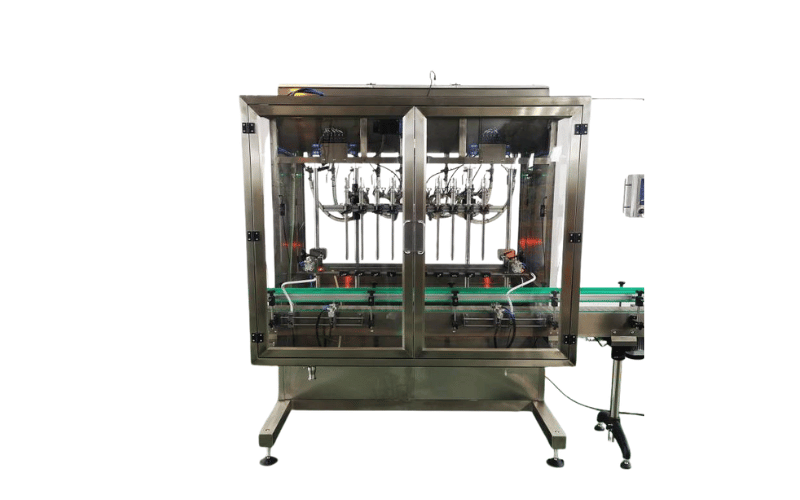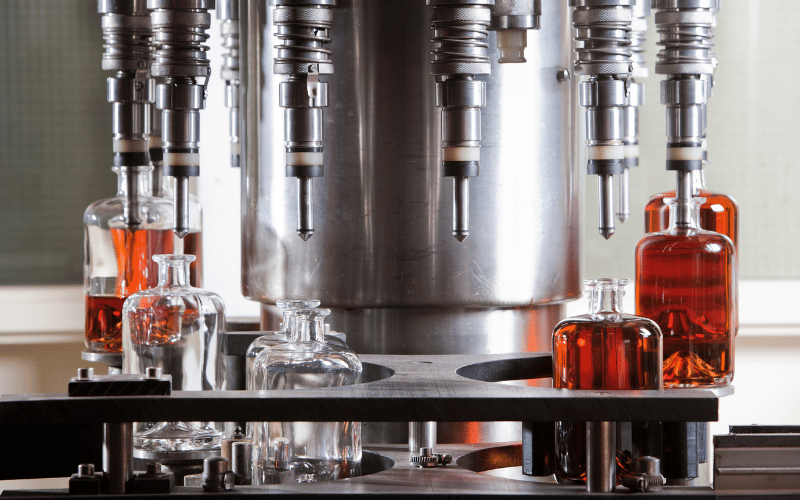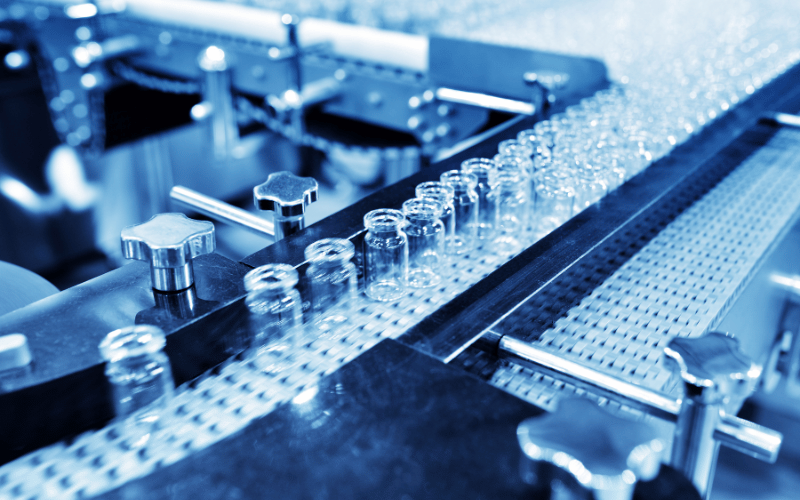Did you know that even a slight improvement in liquid filling efficiency can save manufacturers thousands of dollars annually? In industries where high-volume production is the norm, every drop counts. Gravity filling machines play a pivotal role in ensuring that liquids are dispensed accurately and efficiently, making them a cornerstone of modern packaging operations.
Gravity filling machines utilize the natural force of gravity to transfer liquids into containers, providing a simple yet highly effective solution for low-viscosity products such as water, juices, and cleaning solutions. Their straightforward design makes them easy to operate, cost-effective to implement, and incredibly low-maintenance compared to more complex systems. These qualities make gravity fillers a popular choice for manufacturers seeking to streamline their operations without incurring significant costs.
In this article, we’ll explore the key principles behind gravity filling machines, their benefits, and the best practices for maximizing their performance. We’ll also dive into their most common applications, helping you understand why they remain a trusted solution for efficient liquid filling. Whether you’re new to gravity filling or looking to optimize your current setup, this guide will provide the insights you need to make the most of this reliable technology.
Оглавление
ToggleCore Principles of Gravity Filling
Gravity filling machines operate on a simple yet effective principle: harnessing the natural force of gravity to move liquid from a reservoir into containers. This straightforward approach makes them reliable, cost-effective, and easy to maintain. Let’s break down how gravity drives the process, the differences between time-based and level-based filling, and which products are best suited for this method.
How Gravity Drives the Process
Gravity filling relies on height and pressure to transfer liquid into containers. The process begins with a reservoir positioned above the containers, creating the necessary pressure for the fluid to flow downward. When the filling valve opens, gravity pulls the liquid into the container below.
A vent tube plays a crucial role in this setup by displacing air from the container as the liquid fills it. This ensures a smooth, uninterrupted flow and prevents issues like air pockets or inconsistent fills. The simplicity of this design minimizes mechanical complexity, making gravity fillers easy to operate and maintain.
For example, imagine filling a row of water bottles. The reservoir holds the liquid at a higher elevation, and as each bottle moves into position, the valve opens, allowing gravity to do the work. The vent tube ensures the air escapes, leaving each bottle filled to the desired level or volume.
Time vs. Level Filling
Gravity filling machines can operate using two distinct methods: time-based filling and level-based filling. Each technique serves specific needs, depending on the product and packaging requirements.
Time-Based Filling
Time-based filling measures the liquid volume by controlling the duration for which the valve remains open. This method works best for liquids with consistent viscosity, such as water or cleaning solutions. For instance, if the fluid flows at a steady rate, opening the valve for five seconds will consistently fill each container with the same volume.
Level-Based Filling
Level-based filling focuses on achieving visual uniformity, particularly in clear containers, such as beverage bottles. This method uses an overflow system to ensure that all containers appear to have the same fill level, regardless of slight variations in container size or shape. Excess liquid flows back into the reservoir, maintaining a polished, professional look for products displayed on store shelves.
Product Suitability
Gravity filling machines excel with low-viscosity liquids that flow freely, such as water, juices, and non-carbonated drinks. Their simplicity and efficiency make them a go-to choice for high-volume production lines handling these types of products.
However, gravity fillers are not suitable for every application. Thick liquids, such as honey or peanut butter, require more forceful methods, like piston filling, to ensure consistent fills. Similarly, foamy products or those with particulates, like carbonated beverages or chunky soups, can create challenges for gravity fillers, as the foam or solids can disrupt the flow and lead to inconsistent results.
By understanding the core principles of gravity filling, you can determine whether this method aligns with your product’s characteristics and production goals.
Key Components and Operation
Understanding the components and operation of a gravity filling machine is essential for optimizing its performance and ensuring consistent results. Each part of the machine plays a specific role in the filling process, working together to deliver precision and efficiency. Let’s break down the key components, the step-by-step filling cycle, and the importance of valve types and material selection.
Machine Components
Gravity filling machines consist of several critical components, each designed to handle specific tasks in the filling process:
- Supply Tank (Reservoir): Positioned above the containers, the reservoir holds the liquid and provides the necessary height for gravity to drive the flow.
- Заправочные форсунки: These nozzles control the flow of liquid into the containers, ensuring accuracy and minimizing spillage.
- Sealing Mechanisms: These mechanisms prevent leaks during the filling process by securely sealing the connection between the nozzle and the container.
- Системы контроля: Modern gravity fillers use programmable logic controllers (PLCs) to manage timing, flow rates, and other parameters, ensuring consistent performance.
- Системы обработки контейнеров: Star wheels and conveyors guide containers into position under the fill nozzles, maintaining a smooth and efficient workflow.
Each of these components works in harmony to create a seamless filling process, from liquid storage to container handling.
Step-by-Step Filling Cycle
The filling cycle in a gravity filling machine follows a precise sequence to ensure accuracy and efficiency:
- Container Positioning: The container handling system, such as a conveyor or star wheel, moves containers into position under the fill nozzles. Sensors detect the presence of each container to ensure proper alignment.
- Valve Activation: Once the container is in place, the control system opens the fill valve, allowing liquid to flow from the reservoir into the container.
- Liquid Flow: Gravity drives the liquid downward, filling the container to the desired level or volume. Vent tubes displace air to prevent interruptions in the flow.
- Valve Closure: When the container reaches the target fill level, the control system closes the valve, stopping the flow of liquid.
Sensors and PLCs play a crucial role in this process, monitoring fill levels and ensuring that each container receives the correct amount of liquid. This level of automation reduces errors and increases production efficiency.

Valve Types and Material Considerations
The type of valve used in a gravity filling machine has a significant impact on its performance and suitability for various products.
- Rising Stem Valves: These valves are commonly used in gravity fillers to start and stop the flow of liquid precisely. Their design minimizes dripping and ensures a clean, controlled filling process.
- Material Considerations: The materials used in the machine’s components must align with the product being filled. For example, hygienic materials like stainless steel are essential for food and beverage applications, while chemical-resistant materials are necessary for corrosive liquids, such as cleaning agents.
Choosing the right valve type and materials ensures that the machine operates efficiently and meets industry standards for safety and hygiene.
By understanding the key components and operation of gravity filling machines, you can optimize their performance and ensure they meet the demands of your production line.
Performance, Maintenance, and Accuracy
A gravity filling machine’s performance hinges on its ability to deliver accurate, efficient, and hygienic results. To achieve this, manufacturers must understand the factors that influence accuracy, balance speed with precision, and prioritize regular maintenance. Let’s explore these aspects in detail and provide actionable insights to keep your machine running at its best.
Factors Affecting Accuracy
Several factors can impact the accuracy of a gravity filling machine, and addressing them ensures consistent results:
- Consistency of Liquid Temperature and Viscosity: Temperature variations can alter a liquid’s viscosity, affecting its flow rate. For example, a syrup that flows smoothly at 80°F may slow down significantly at 60°F, leading to underfills. Maintaining a stable product temperature is critical for accurate fills.
- Head Pressure Variations: The liquid level in the reservoir directly affects head pressure. As the reservoir empties, the pressure decreases, potentially causing inconsistent fills. Installing a level sensor or maintaining a constant liquid level can mitigate this issue.
- Nozzle Condition: Worn or damaged nozzles can lead to drips, leaks, or uneven flow. Regularly inspecting and replacing nozzles ensures smooth operation.
- Calibration for Time and Level Settings: Proper calibration of time-based or level-based filling systems is essential. For time-based systems, ensure the valve remains open for the correct duration. For level-based systems, verify that the overflow mechanism is functioning correctly to achieve uniform fill levels.
Speed and Throughput
Production speed is a critical factor in meeting output goals, but it must be balanced with accuracy to avoid waste or rework.
- Number of Nozzles: The number of fill nozzles directly impacts production speed. For example, a machine with four nozzles can fill four containers simultaneously, doubling the throughput of a two-nozzle system. Adding more nozzles increases speed but may require additional calibration to maintain accuracy.
- Balancing Speed with Accuracy: Pushing a machine to its maximum speed can compromise fill accuracy, especially for liquids with inconsistent viscosity. Adjusting the flow rate and monitoring the system’s performance helps strike the right balance between speed and precision.
For high-volume operations, consider investing in a multi-nozzle system with advanced controls to optimize both speed and accuracy.
Maintenance and Hygiene
Proper maintenance and hygiene are non-negotiable, especially in industries like food and beverage, where contamination risks are high.
- Clean-In-Place (CIP) Systems: CIP systems simplify the cleaning process by enabling operators to clean the machine’s internal components without disassembling the machine. This is particularly important for food-grade applications, where thorough cleaning prevents bacterial growth and ensures compliance with safety standards.
- Routine Inspection and Sanitization: Regularly inspect components, such as nozzles, seals, and valves, for wear or residue buildup. Sanitizing these parts prevents cross-contamination, especially when switching between products. For example, a machine filling orange juice one day and iced tea the next must be thoroughly cleaned to avoid flavor transfer.
Устранение распространенных проблем
Even the best-maintained machines can encounter issues. Addressing them promptly minimizes downtime and ensures consistent performance:
- Inaccurate Fills: Check for variations in вязкость жидкости, head pressure, or calibration settings to ensure accurate fills. Adjusting these factors often resolves the issue.
- Leaks: Inspect nozzles, seals, and valves for damage or wear. Replacing faulty components prevents further leaks.
- Container Alignment Problems: Misaligned containers can lead to spillage or incomplete fills. Ensure the container handling system, such as conveyors or star wheels, is appropriately adjusted and functioning smoothly.
By understanding the factors that influence performance, maintaining a rigorous cleaning schedule, and addressing issues proactively, you can maximize the efficiency and accuracy of your gravity filling machine.
Comparing Gravity Fillers to Other Technologies
Choosing the right filling technology requires understanding how each method performs under different conditions. Gravity fillers excel in simplicity and cost-effectiveness, but other technologies may be better suited for specific products or production goals. Let’s compare gravity fillers to pressure, piston, and overflow filling systems to help you make an informed decision.
Gravity vs. Pressure Filling
Pressure filling steps in where gravity filling falls short, particularly for thicker or foamy products. While gravity fillers rely solely on the natural force of gravity, pressure fillers use additional force to push liquids into containers. This makes them ideal for products like carbonated beverages, which require controlled pressure to prevent foaming, or viscous liquids like syrups and oils that don’t flow freely.
From a cost and complexity perspective, gravity fillers are the simpler option. They have fewer moving parts, making them easier to maintain and more affordable to operate. Pressure fillers, on the other hand, involve more intricate components like pressurized tanks and specialized nozzles, which increase both the initial investment and ongoing maintenance requirements.
If your product is thin and free-flowing, gravity filling provides a straightforward and budget-friendly solution. However, for thicker or foamy liquids, pressure filling provides the additional force needed to ensure consistent results.
Gravity vs. Piston Filling
Piston fillers are the go-to choice for precise volumetric dosing, particularly for thicker products such as peanut butter, creams, or chunky soups. Unlike gravity fillers, which rely on time or level-based filling, piston fillers use a cylinder and piston mechanism to measure and dispense exact volumes of liquid. This level of precision makes them indispensable for high-value or viscous products where accuracy is critical.
However, piston fillers come with more demanding cleaning and maintenance requirements. The piston and cylinder must be disassembled and cleaned thoroughly, especially when switching between products. Gravity fillers, by contrast, are easier to clean and maintain due to their simpler design.
If your production line handles a mix of thin and thick liquids, you may want to consider using both technologies. Gravity fillers can handle the free-flowing products, while поршневые наполнители take care of the thicker, more challenging ones.
Gravity vs. Overflow Filling
Overflow filling is the preferred method for achieving visual consistency in clear containers, such as beverage bottles or shampoo bottles. This system ensures that every container appears to have the same fill level, even if there are slight variations in container size or shape. Gravity fillers, although not specifically designed for this purpose, can incorporate overflow variations to achieve similar results.
The key difference lies in the handling of excess liquid. Overflow fillers are designed to return excess fluid to the reservoir, ensuring a clean and polished appearance. Gravity fillers with overflow adaptations can mimic this functionality but may not offer the same level of precision for clear containers.
If your product’s appearance is a priority, such as in retail beverages, overflow filling provides the aesthetic consistency consumers expect. For less appearance-sensitive applications, gravity fillers remain a cost-effective and efficient alternative.
By comparing gravity fillers to pressure, piston, and overflow systems, you can better understand where each technology fits into your production needs. Each method has its strengths, and the right choice depends on your product’s characteristics, production goals, and budget.
Innovations in Gravity Filling Technology
Gravity filling technology has advanced significantly, evolving to meet the demands of modern manufacturing. Today’s machines are more intelligent, more efficient, and environmentally conscious, making them indispensable for businesses aiming to stay competitive. Let’s explore how automation, electronics, and sustainability are reshaping gravity filling systems.
Automation and Electronics
Modern gravity fillers have embraced automation and advanced electronics to deliver unparalleled accuracy and efficiency. Sensors now play a critical role in monitoring every stage of the filling process. For example, liquid level sensors in the reservoir ensure consistent head pressure, while container detection sensors prevent spillage by confirming proper alignment before filling begins.
Programmable settings, managed through user-friendly control panels, enable operators to fine-tune parameters such as fill time, flow rate, and nozzle activation. This level of customization ensures that the machine adapts seamlessly to different products and container sizes.
The integration of artificial intelligence (AI) takes automation a step further. AI systems analyze real-time data to identify inefficiencies, such as inconsistent fills or nozzle drips, and make immediate adjustments to maintain optimal performance. For instance, if the viscosity of a liquid changes due to temperature fluctuations, the AI can automatically recalibrate the fill time, ensuring accuracy without manual intervention.
Характеристики устойчивости
Sustainability has become a driving force in the design of gravity filling machines, with manufacturers prioritizing energy efficiency and eco-friendly materials.
Energy-efficient designs, such as the use of variable frequency drives (VFDs), optimize motor speed and reduce power consumption during operation. This not only lowers operational costs but also minimizes the machine’s environmental footprint. For example, a gravity filler equipped with VFDs can adjust its energy usage based on production speed, ensuring that no excess power is wasted during slower cycles.
Eco-friendly materials and processes are also gaining traction. Many machines now feature stainless steel components that are not only durable but also recyclable. Additionally, manufacturers are adopting modular designs that enable easy upgrades or part replacements, thereby extending the machine’s lifespan and reducing waste.
These innovations make gravity fillers more than just a cost-effective solution—they become a sustainable choice for businesses looking to align with environmental goals while maintaining high production standards.
By integrating advanced automation and prioritizing sustainability, gravity filling technology continues to evolve, offering manufacturers more innovative, greener, and more efficient solutions for their production lines.
FAQs: Common Questions About Gravity Filling
Q: What kinds of products are best suited for gravity filling?
A: Gravity filling works best for low-viscosity liquids that flow freely, such as water, juices, non-carbonated beverages, cleaning solutions, and light oils. These products don’t require additional force to move through the system, making gravity fillers an efficient and cost-effective choice.
Q: How does temperature affect the accuracy of a gravity filler?
A: Temperature changes can alter a liquid’s viscosity, which directly impacts flow rate and fill accuracy. For example, a liquid that flows easily at a higher temperature may slow down as it cools, leading to underfills. To maintain accuracy, it is essential to monitor and stabilize the product’s temperature during the filling process.
Q: Can gravity filling machines handle carbonated beverages?
A: Gravity fillers are not ideal for carbonated beverages. The natural flow of liquid in a gravity system can cause excessive foaming, leading to inconsistent fills and product loss. Pressure-filling systems are better suited for carbonated products, as they control the flow and maintain carbonation levels.
Q: What is the typical lifespan of a gravity filling machine?
A: With proper maintenance, a gravity filling machine can last 10 to 15 years or more. Regular cleaning, timely replacement of wear-and-tear components like seals and nozzles, and adherence to maintenance schedules ensure a long operational life.
Q: How often should a gravity filler be calibrated?
A: You should calibrate a gravity filler whenever you change products, adjust fill volumes, or notice inconsistencies in fills. For consistent performance, schedule routine calibration checks at least once a month, depending on production demands.
Q: Do gravity fillers use pumps?
A: No, gravity fillers do not use pumps. They rely on the natural force of gravity to move liquid from the reservoir into containers. This simplicity makes them cost-effective and easy to maintain compared to pump-based systems.
Q: What is the difference between time filling and level filling?
A: Time filling measures the liquid volume by controlling how long the valve stays open, making it ideal for products with consistent viscosity. Level filling, on the other hand, ensures that all containers are filled to the same visual level, which is especially important for clear containers, such as beverage bottles. Time-filling prioritizes volume accuracy, while level-filling focuses on aesthetic consistency.
Conclusion: The Value of Gravity Filling Machines
Gravity filling machines offer unmatched simplicity, cost-effectiveness, and versatility, making them a reliable choice for many manufacturers. Their straightforward design ensures efficient and consistent liquid packaging, especially for low-viscosity, non-foamy liquids. If you’re looking for a dependable solution to streamline your production line, consider gravity fillers as a practical and efficient option.




